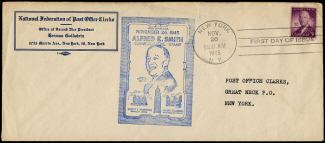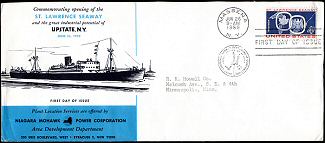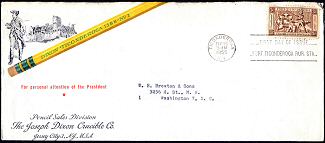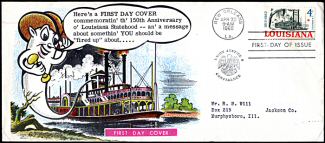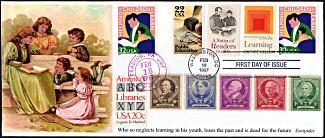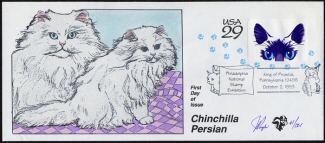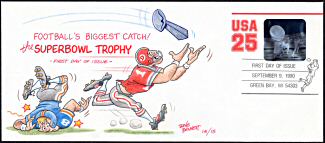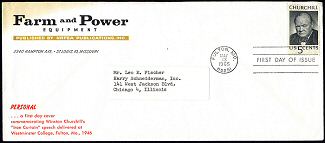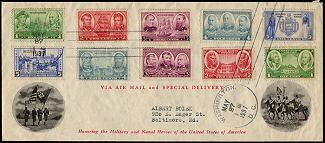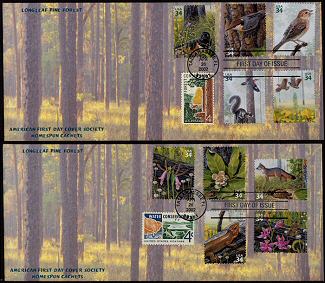
 |

Click Pictures for a Larger View
All 10s
| From 1939 to 1957, Albert Goldman, the postmaster of New York, provided rubber-stamp cachets for stamps issued in New York City. (Sometimes, the design was also available as a printed cachet.) Here's an example on what's called a "corner card" envelope: A business envelope with the return address. On this cover, the envelope comes from the union for postal clerks, and the FDC is addressed to the "POST OFFICE CLERKS" of Great Neck, New York, on Long Island. Alfred E. Smith (Sc. 937) was a four-time Democratic governor of New York and an unsuccessful presidential candidate — the first Roman Catholic to run for president on a major-party ticket — in 1928. | Niagara-Mohawk, upstate New York's major power company, celebrated the opening of the St. Lawrence Seaway (Sc. 1131) with this advertising FDC. Inside was a horizontal folded card that notes the "great new promise for industry" the seaway provided, that Niagara-Mohawk serves the entire American shore of the seaway, and "this area might be the answer to your plant location problem." |
| For the Ticonderoga stamp (Sc. 1071), an advertising FDC from the makers of Ticonderoga pencils! By the way, many advertising FDCs are only found in opened condition, like this one. That's because these first day covers not only traveled through the mail, they carried mail. | Texas Refinery Corporation used quite a few issues between 1959 and 1969 to promote itself with some of the most interesting FDCs of the period, including Sc. 1197. |
| S&T Cachets (VSC member Tom O'Hagan) needed the extra space of a No. 10 envelope to get all the education-related stamps on a first day cover of Sc. 3125 Helping Children Learn. Note also the "Reading, Pa." postmark on the left-most three stamps. | Many U.S. stamped envelopes are only offered in the No. 10 size, so cachetmakers like Pugh Cachets that service every issue have no choice. Sc. U630 was issued at the PNSE show, but this cover sports the show's pictorial postmark. |
| VSC member Dave Bennett only made 15 of these hand-drawn/-painted cachets for the first U.S. hologram issue (Sc. U618), which was only available in the No. 10 size. | I'm not sure of the connection between Farm & Power Equipment and Winston Churchill (Sc. 1264), nor whether the trade magazine used existing business envelopes and had the red imprint added, or had the envelopes printed expressly for these FDCs. |
| Even in the 1930s, cachetmakers recognized that sometimes you need a little extra space, such as for affixing an entire 10-stamp set like Sc. 785-794 Army-Navy. This is an Ioor cachet, Mellone (Planty) No. 2c. | The cachet is by … well, by the U.S. Postal Service. Or by me. It's really the top and bottom selvage from the Celebrate the Century/1900s sheet, affixed to a standard No. 10 business envelope. (Note the diagonal perforations under "Celebrate the Century.") And the selvage, with the same theme as Sc. 3182g, would only fit on a No. 10. |
| The American First Day Cover Society and Homespun Cachets (VSC member Barry Southard) used two No. 10s to accommodate all ten stamps from the Nature of American-Longleaf Pine Forest set (Sc. 3611) and related stamps. |
Lloyd A. de Vries
©2007 de Vries Philatelic Media

